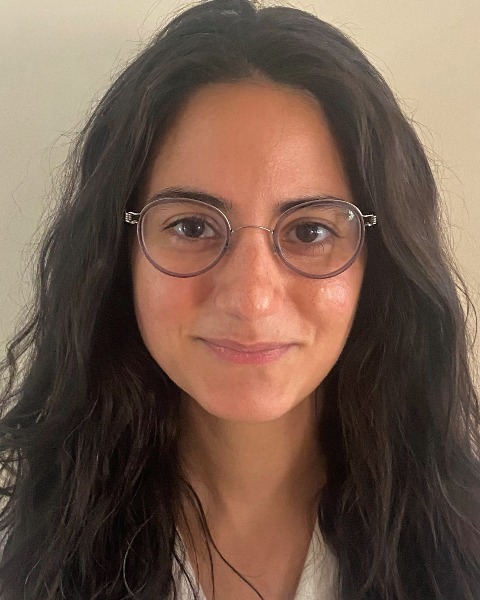Back
Telemedicine/EHR/Medical Informatics
Category: Abstract Submission
Telemedicine/EHR/Medical Informatics II
304 - Sustainable EMR builds for tracking early childhood dyadic care models
Sunday, April 24, 2022
3:30 PM – 6:00 PM US MT
Poster Number: 304
Publication Number: 304.347
Publication Number: 304.347
Natalie Cohen, NYC Health+Hospitals, New York, NY, United States; Katherine Piwnica-Worms, NYU Grossman School of Medicine, New York, NY, United States; John Lyons, NYC Health & Hospitals, CHESTER SPRINGS, PA, United States; Mary M. McCord, NYC H+H/Gotham Health, New York, NY, United States

Natalie Cohen, MPH (she/her/hers)
Director of Program Operations, 3-2-1 IMPACT!
NYC Health+Hospitals
New York, New York, United States
Presenting Author(s)
Background: There is growing national interest in expanding interdisciplinary early childhood dyadic care models. These models require user-friendly documentation tools that allow team members to work collaboratively across disciplines and mother-child dyads. Currently, siloed data reporting leads to separate documentation workflows outside of the electronic medical record (EMR) that are cumbersome and not sustainable.
Objective: We describe Epic documentation and reporting builds from 3-2-1 IMPACT, New York City Health+Hospitals’ (NYC H+H) dyadic care model that began at 3 facilities in October 2020, which combines HealthySteps, Reach Out and Read (ROR), Video Intervention Project (VIP), community health workers (CHWs), integrated behavioral health (IBH), and universal screening across women’s health and pediatric departments.
Design/Methods: National reporting needs from HealthySteps, VIP, and ROR were collected and mapped into Epic tools. An iterative process with stakeholder engagement across facilities, disciplines, and departments led to the creation of simple tools for documentation and ease of data review. To support the dyadic nature of the program, mother-child linkages were autogenerated if a mother delivered at NYC H+H. Operational, quality, and evaluation reports were done in collaboration with staff and evaluation team members. EMR design efforts required close partnerships between our business analyst, report writer, and operational leadership.
Results: Within Epic, we successfully linked 4,734/5,900 (80.2%) of children enrolled in IMPACT to their mother’s chart. Documentation for IMPACT components (e.g. HealthySteps) was designed as simple structured data elements with a free text component, allowing for required data collection with documentation flexibility. Synopsis view was built for interdisciplinary staff to easily access key clinical and screening results. Screen interpretations and billable codes were autogenerated after screening completion for ease of clinical, documentation, and billing workflows. Referral tracking for non-billable providers and services was built as simple structured data elements. Lastly, EMR generated reports are used for internal and external program reporting and evaluation needs.Conclusion(s): Our work suggests that multi-facility, cross-department, interdisciplinary, dyadic care models combining multiple programs can be successfully tracked and integrated in Epic. Moving beyond siloed documentation and data structures of dyadic programs is essential to clinical operations and evaluation efforts but has not been widely adopted.
Objective: We describe Epic documentation and reporting builds from 3-2-1 IMPACT, New York City Health+Hospitals’ (NYC H+H) dyadic care model that began at 3 facilities in October 2020, which combines HealthySteps, Reach Out and Read (ROR), Video Intervention Project (VIP), community health workers (CHWs), integrated behavioral health (IBH), and universal screening across women’s health and pediatric departments.
Design/Methods: National reporting needs from HealthySteps, VIP, and ROR were collected and mapped into Epic tools. An iterative process with stakeholder engagement across facilities, disciplines, and departments led to the creation of simple tools for documentation and ease of data review. To support the dyadic nature of the program, mother-child linkages were autogenerated if a mother delivered at NYC H+H. Operational, quality, and evaluation reports were done in collaboration with staff and evaluation team members. EMR design efforts required close partnerships between our business analyst, report writer, and operational leadership.
Results: Within Epic, we successfully linked 4,734/5,900 (80.2%) of children enrolled in IMPACT to their mother’s chart. Documentation for IMPACT components (e.g. HealthySteps) was designed as simple structured data elements with a free text component, allowing for required data collection with documentation flexibility. Synopsis view was built for interdisciplinary staff to easily access key clinical and screening results. Screen interpretations and billable codes were autogenerated after screening completion for ease of clinical, documentation, and billing workflows. Referral tracking for non-billable providers and services was built as simple structured data elements. Lastly, EMR generated reports are used for internal and external program reporting and evaluation needs.Conclusion(s): Our work suggests that multi-facility, cross-department, interdisciplinary, dyadic care models combining multiple programs can be successfully tracked and integrated in Epic. Moving beyond siloed documentation and data structures of dyadic programs is essential to clinical operations and evaluation efforts but has not been widely adopted.
